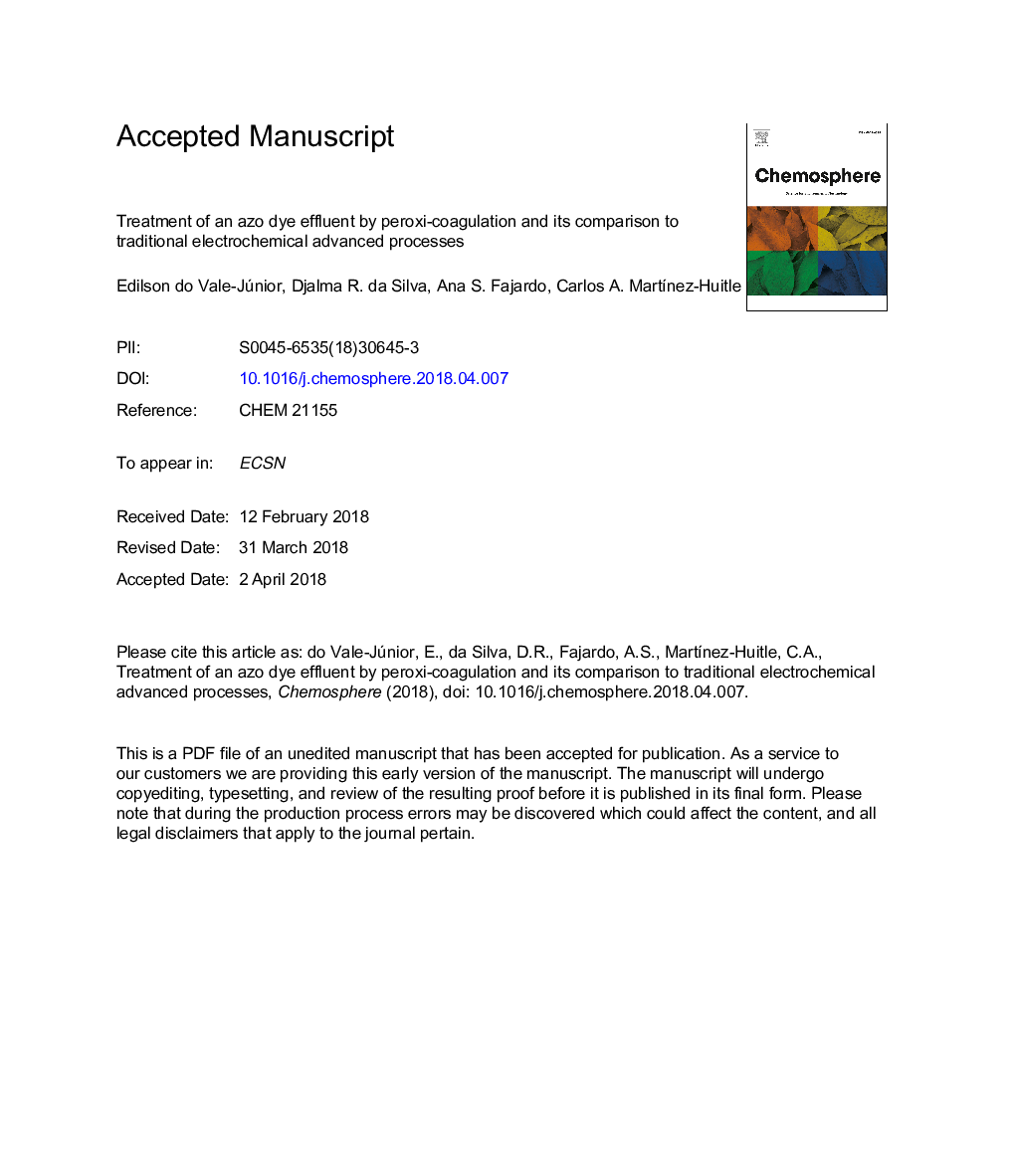| Article ID | Journal | Published Year | Pages | File Type |
|---|---|---|---|---|
| 8851265 | Chemosphere | 2018 | 33 Pages |
Abstract
Peroxi-coagulation (PC) is an interesting new process that has not been widely studied in the literature. This work presents the application of this technology to treat an azo dye synthetic effluent, studying the effect of different parameters including initial pH, current density (j), initial dye concentration and supporting electrolyte. The two former variables significantly affected the colour removal of the wastewater, followed by the initial dye concentration and the kind of electrolyte, in a lesser extent. The optimum operating conditions achieved were initial pH of 3.0, jâ¯=â¯33.3â¯mAâ¯cmâ2, 100â¯mgâ¯Lâ1 of methyl orange (MO) and Na2SO4 as supporting electrolyte. The performance of PC was also compared to other electrochemical advanced processes, under similar experimental conditions. Results indicate that the kinetic decay of the MO increases in the following order: electrocoagulation (EC)â¯<â¯electrochemical oxidation (EO) with electrogenerated H2O2 << PCâ¯<â¯electro-Fenton (EF). This behaviour is given to the high oxidant character of the homogenous OH radicals generated by EF and PC approaches. The EO process with production of H2O2 (EO-H2O2) is limited by mass transport and the EC, as a separation method, takes longer times to achieve similar removal results. Energy requirements about 0.06â¯kWh gCODâ1, 0.09â¯kWh gCODâ1, 0.7â¯kWh gCODâ1 and 0.1â¯kWh gCODâ1 were achieved for PC, EF, EO-H2O2 and EC, respectively. Degradation intermediates were monitored and carboxylic acids were detected for PC and EF processes, being rapidly removed by the former technology. PC emerges as a promising and competitive alternative for wastewaters depollution, among other oxidative approaches.
Related Topics
Life Sciences
Environmental Science
Environmental Chemistry
Authors
Edilson do Vale-Júnior, Djalma R. da Silva, Ana S. Fajardo, Carlos A. MartÃnez-Huitle,
